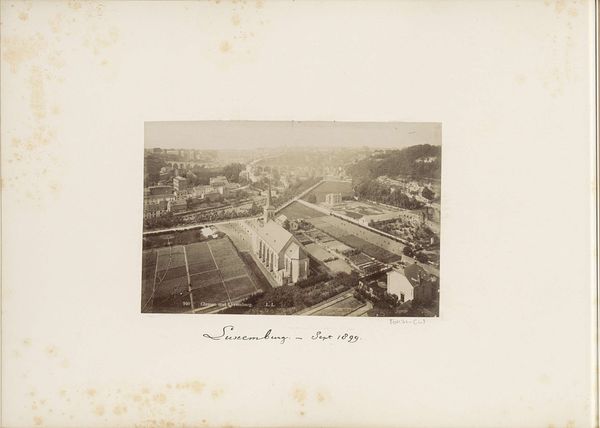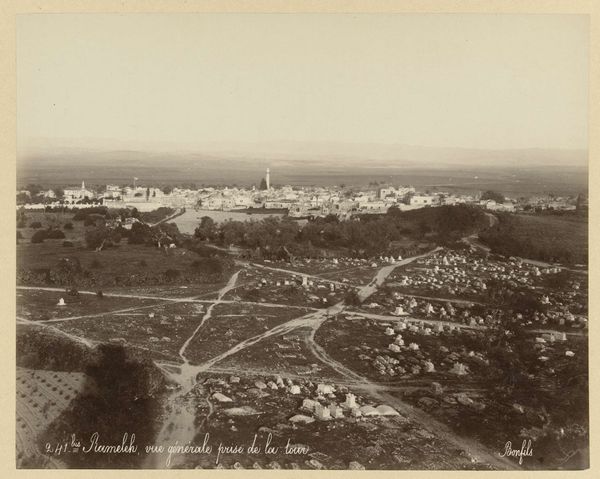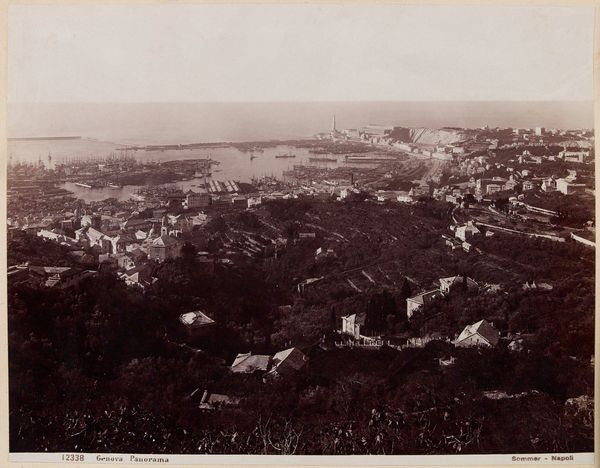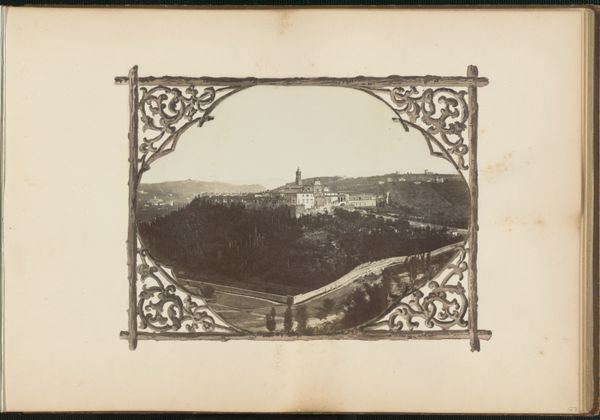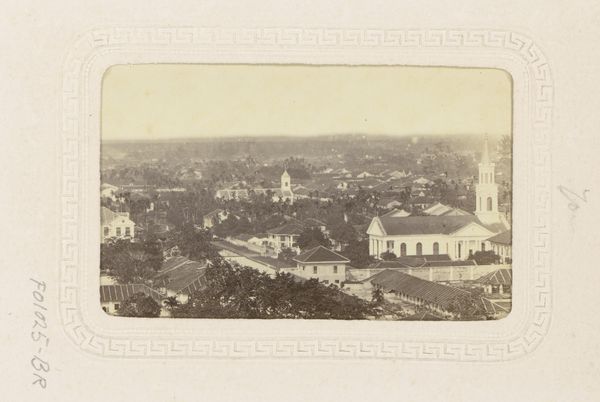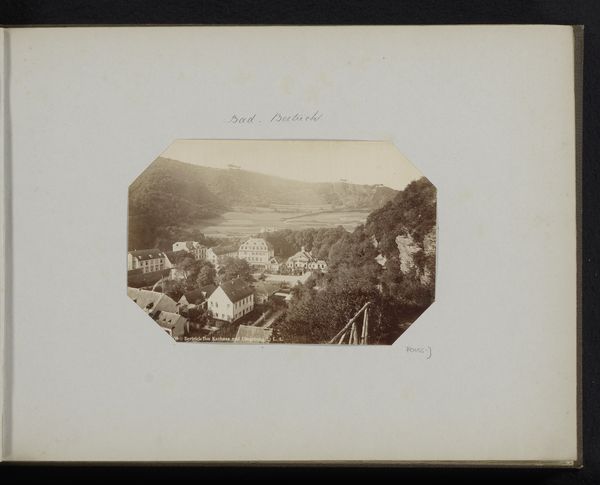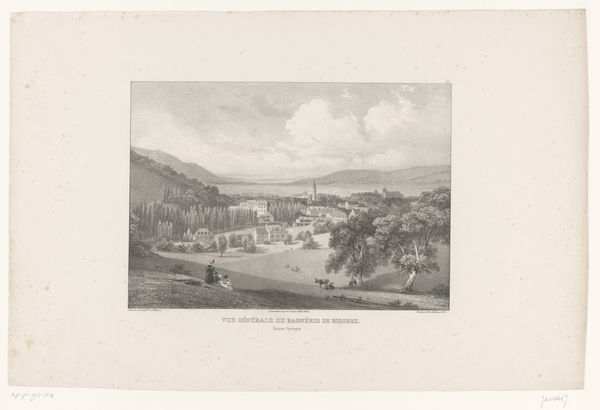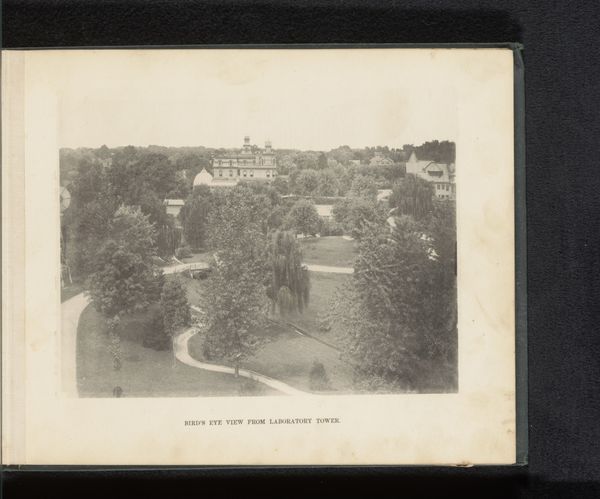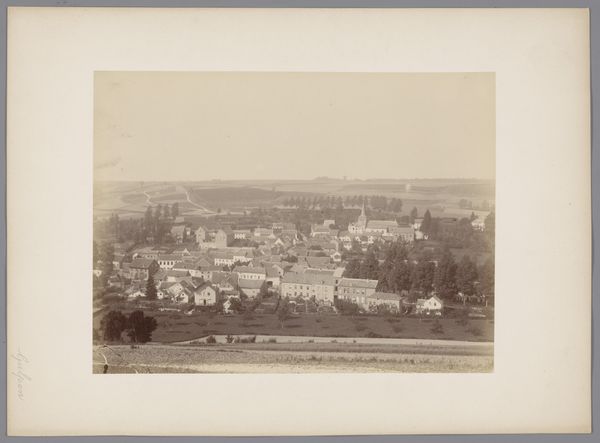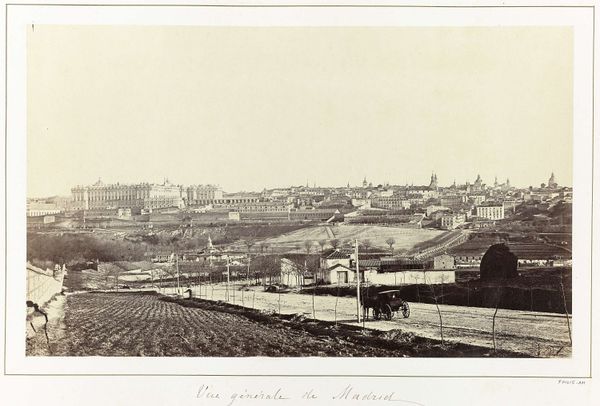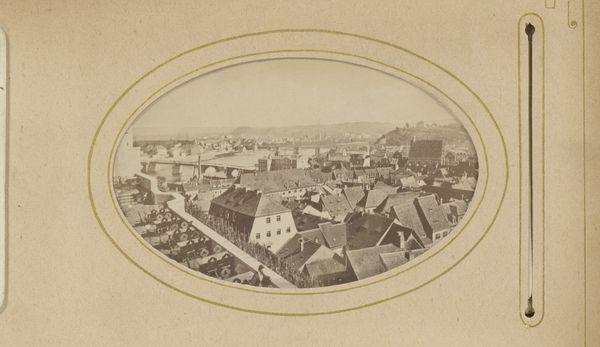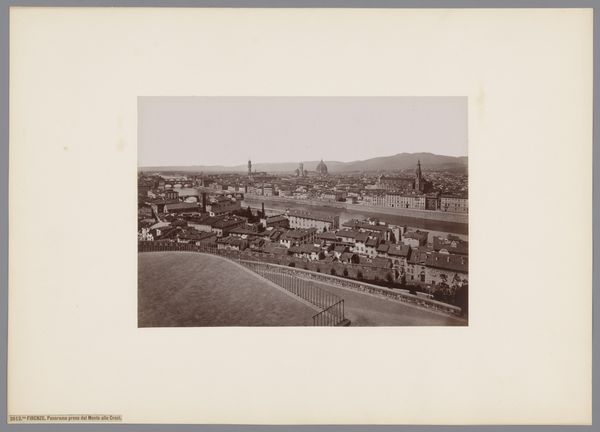
#
photo of handprinted image
#
aged paper
#
light pencil work
#
water colours
#
ink paper printed
#
light coloured
#
fading type
#
watercolour bleed
#
watercolour illustration
#
watercolor
Dimensions: height 120 mm, width 183 mm
Copyright: Rijks Museum: Open Domain
Editor: This work, “Gezicht op Pfaffenthal en Clausen in de stad Luxemburg,” from before 1899 and housed at the Rijksmuseum, feels like an echo of a bygone era. The paper itself looks aged, adding to the feeling. It’s incredibly detailed and you can notice it's most likely an ink print on paper with some added watercolors. What can you tell me about this piece? Curator: What strikes me immediately is the process of reproduction itself. The use of photography at this point was becoming more widespread, impacting artistic production, challenging traditional painting. This specific photograph being on paper shifts how we percieve images in contemporary society. We should also look at what it means to document labor that allowed for this capture, where was the location, who had access and could be involved in such industrial/technological projects at this time in history? Editor: So, the act of printing it is more important than the image itself? I hadn’t considered that perspective. Curator: Not *more* important, but certainly interconnected. This piece sits at a really interesting intersection of industry, art, and commerce. What do you think this type of printing meant for art and cultural exchange at that moment in history? Think of production on demand, availability... Editor: I suppose it would democratize the view, in a way? Curator: Precisely! Now imagine the laborers behind its creation, the type of paper and the ink used; these were produced by human and machine effort, for distribution to wider audiences. We might ask ourselves about these individuals whose skill and physical energy, not to mention risks such as exploitation and safety were put into making them available to people who purchased it. This piece highlights production in the end, and the accessibility and the start of art consumption for larger groups of people, perhaps who couldn't see the place, and may now consider to visit because the art sparked this interest! Editor: That's a completely different way to think about this, viewing the final product of consumed art but keeping in mind the socio-economic structures and even dangers that allowed its making. Thanks so much! Curator: My pleasure. Hopefully you'll consider these perspectives from now on, looking at works of art!
Comments
No comments
Be the first to comment and join the conversation on the ultimate creative platform.
